Red light waves effectively break down your fat cells through a specific biological process. When these waves penetrate your skin at wavelengths between 600-850 nanometers, they activate your fat cells' membranes and trigger the release of stored triglycerides. Your cells don't die – they simply shrink as they release their fatty contents. The light also boosts your mitochondrial function, increasing ATP production and enhancing your body's natural fat-burning abilities. Your lymphatic system then processes and eliminates the released fat. Combining this therapy with exercise can boost fat loss results by up to 444%. Understanding the complete mechanism reveals why this method has become increasingly popular for body contouring.
The Science Behind Red Light
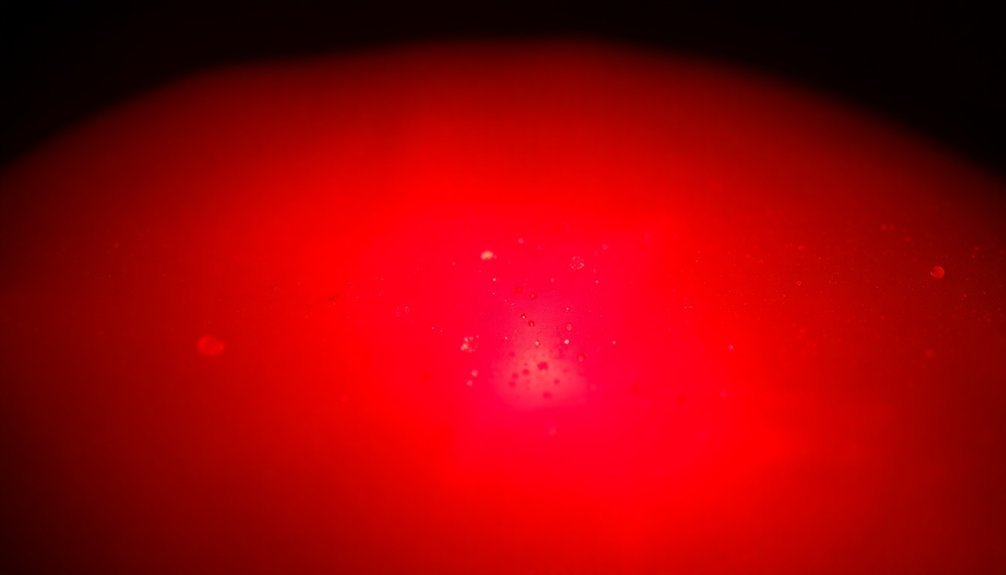
The therapy works by increasing cyclic adenosine monophosphate levels, which stimulates hormone-sensitive lipase. This enzyme breaks down triglycerides into fatty acids and glycerol, reducing fat cell volume. Research shows post-exercise sessions can enhance fat loss results by up to 444% compared to exercise alone.
You'll get the best results with consistent exposure – three to five sessions weekly, lasting 10-20 minutes each. The light must be distributed uniformly across your target areas to effectively reach the subcutaneous fat layer.
When you combine this therapy with regular exercise and a balanced diet, you're maximizing its fat-reduction potential.
How Red Light Targets Fat
When you're exposed to red light therapy, the wavelengths penetrate your skin to reach fat cells, where they activate cellular pores and trigger the release of stored fatty acids.
Your cells' mitochondria then use this released fat to produce more energy through enhanced metabolic processes. This process is aided by red light therapy's ability to boost ATP production.
The specific wavelengths of red light work at depths of 8-10 millimeters beneath your skin's surface, making them particularly effective at targeting stubborn fat deposits in areas like your waist and thighs.
Cellular Energy Production Process
Understanding how red light therapy targets fat cells begins with its remarkable impact on cellular energy production. When red light waves penetrate your adipose tissue, they activate a vital enzyme called cytochrome c oxidase, which kicks your cells' energy production into high gear. These healing wavelengths are delivered through LEDs or lasers for optimal tissue penetration.
Your mitochondria, the cellular powerhouses, respond to this activation by ramping up their energy-making processes. Through glycolysis and the citric acid cycle, they convert nutrients into ATP – your cells' primary energy currency. The electron transport chain becomes more efficient, utilizing high-energy electrons from NADH and FADH2 to generate even more ATP.
| Process | Function | Result |
|---|---|---|
| Photobiomodulation | Converts light to cellular energy | Activates cytochrome c oxidase |
| Enhanced Respiration | Increases ATP production | Boosts cellular metabolism |
| Lipolysis Activation | Breaks down stored fat | Reduces fat deposits |
This enhanced energy production creates a domino effect: your adipocytes (fat cells) release stored fat, circulation improves, and metabolism increases. The combination of these processes makes red light therapy an effective tool for fat reduction while promoting healing and regeneration throughout your body's tissues.
Fat Cell Pore Activation
Precision defines how red light therapy creates temporary pores in fat cell membranes, offering a direct pathway for stored fat to escape. When you undergo red light therapy, these microscopic openings allow stored triglycerides to move from inside your fat cells into the surrounding interstitial space.
Research shows that treated cells can release up to 99% of their fat content after just six minutes of exposure.
You'll find that this pore activation process isn't permanent – the openings are reversible over time, which is why you'll need consistent treatment for lasting results. As the pores open, your body's lymphatic and circulatory systems step in to eliminate the released fat lipids.
This process works alongside the therapy's ability to trigger hormone-sensitive lipase, an enzyme that enhances fat breakdown.
For ideal results, you'll want to maintain good blood flow to the treated areas, as this helps transport the released fats where they can be burned for energy. Remember that without a calorie deficit, your body might store these released fats in nearby fat cells rather than burning them, making diet and exercise essential companions to your red light therapy sessions.
Wavelength Penetration Mechanics
The science of red light wavelengths offers specific targeting capabilities for fat reduction. When you're looking to break down fat cells, understanding how different wavelengths penetrate your tissue becomes essential.
Red light in the 635-660 nm range penetrates effectively to about 6 cm deep, making it ideal for targeting subcutaneous fat deposits that lie just beneath your skin's surface.
The penetration mechanics of red light therapy depend on several key factors that determine its effectiveness:
- You'll need a minimum intensity of 100 mW/cm2 for the light to reach fat cells effectively
- Near-infrared wavelengths penetrate deeper than red light, targeting fat in deeper tissue layers
- Red light at 635 nm specifically targets fat cells while maintaining skin safety
- Combining red and near-infrared wavelengths creates a thorough approach for all fat depths
- The light's coverage area must balance intensity with the treatment zone size
When the light reaches your fat cells, it stimulates your mitochondria and triggers lipid release. Your improved blood flow then helps transport these released fats away for energy use.
This process works most effectively when you maintain proper distance and exposure time during treatment sessions.
Cellular Response to Red Waves

Your body's cells spring into action when exposed to red light waves, dramatically boosting ATP production through enhanced mitochondrial function.
The light waves penetrate your cell membranes, making them more permeable and allowing for better nutrient absorption and waste removal.
These cellular changes trigger a cascade of metabolic responses, including increased energy production and improved fat-burning capabilities.
ATP Production During Exposure
When red light waves penetrate cellular tissues, they trigger a remarkable cascade of biochemical reactions that boost ATP production within the mitochondria. Through photobiomodulation, the light waves stimulate your cells' powerhouses, leading to enhanced cellular respiration and increased energy production.
Your cells respond to red light therapy by:
- Absorbing photons that activate mitochondrial function
- Increasing cyclic AMP levels for improved ATP synthesis
- Enhancing cellular respiration efficiency
- Modulating cytokine production to reduce inflammation
- Stimulating enzyme activation for metabolic processes
This surge in ATP production directly impacts your fat cells' behavior. As ATP levels rise, hormone-sensitive lipase becomes more active, accelerating the breakdown of stored fat.
You'll find that this process, known as lipolysis, works more efficiently when your cells have abundant energy.
Clinical studies support these findings, showing that participants who undergo red light therapy experience measurable fat reduction compared to control groups.
This isn't just theory – it's a well-documented process where increased ATP production correlates with enhanced fat breakdown and cellular metabolism.
Mitochondrial Function Enhancement
Diving deep into cellular mechanics, red light waves dramatically enhance mitochondrial function through multiple pathways. When these waves penetrate your cells, they directly interact with cytochrome C oxidase, a vital enzyme in your mitochondria's electron transport chain. This interaction breaks harmful nitric oxide bonds and increases the enzyme's activity, leading to more efficient energy production.
You'll find that red light therapy doesn't just boost existing mitochondria – it actually increases their numbers within your cells. This higher mitochondrial density means your cells can produce more ATP, your body's primary energy currency.
The therapy also helps combat the mitochondrial fragmentation that often occurs with high-fat diets and obesity, particularly in white fat cells where RalA protein typically causes problems.
What's particularly impressive is how red light therapy reduces oxidative stress in your mitochondria. By enhancing the natural antioxidant defenses and improving overall mitochondrial function, you'll experience less cellular damage from reactive oxygen species.
This improvement in mitochondrial health is especially significant because dysfunction in these cellular powerhouses is linked to various metabolic conditions, including type 2 diabetes and obesity.
Cell Membrane Permeability Changes
Beyond mitochondrial effects, red light therapy directly alters your cell membrane's permeability, creating a more efficient cellular environment. When red light photons interact with your cells, they stimulate the NaK+ pump, which helps regulate the movement of molecules across cell membranes.
This enhanced permeability means your cells can better absorb nutrients and eliminate waste products, while maintaining ideal pH levels.
The increased membrane permeability triggers several essential cellular responses:
- Facilitates the exchange of important signaling molecules and ions
- Activates specific proteins like AP1 and NF-B
- Promotes better cellular communication and response
- Enhances nutrient absorption into your cells
- Improves waste elimination from cellular spaces
These membrane changes play a key role in breaking down fat cells by creating an environment where your cells can function more efficiently. When your cell membranes become more permeable, they're better equipped to participate in various metabolic processes, including fat metabolism.
The enhanced movement of molecules across cell membranes also supports the body's natural detoxification processes, making red light therapy an effective tool for cellular optimization and fat reduction.
ATP Production and Fat Breakdown
The complex process of ATP production from fat begins with the breakdown of triglycerides into fatty acids and glycerol through lipolysis.
Once broken down, fatty acids are converted into fatty acyl CoA molecules, which combine with carnitine to cross the mitochondrial membrane. Inside the mitochondria, these molecules undergo β-oxidation, breaking down into two-carbon acetyl CoA units.
A single 16-carbon fatty acid can generate approximately 131 ATP molecules, making fat an incredibly efficient energy source. During this process, NADH and FADH2 are produced and enter the electron transport chain, creating a proton gradient that ATP synthase uses to convert ADP into ATP.
Meanwhile, the glycerol component enters the glycolysis pathway as DHAP.
Your body's ability to break down fat for energy depends on several regulatory enzymes, including ATGL, HSL, and MGL. When you exercise, particularly at low to moderate intensities, your muscles rely on intramuscular triglycerides for energy.
Exercise training enhances this process by increasing both IMTG content and your body's ability to use it during physical activity.
Lymphatic System's Role

Within your body's intricate network, the lymphatic system serves as a crucial link between fat digestion and metabolism. When you consume fats, specialized vessels called lacteals absorb them from your intestines and convert them into chyle, a milky-white substance that's transported through your lymphatic network.
Your lymphatic system's efficiency in processing fats depends on several key factors:
- Proper chylomicron formation after high-fat meals
- Active lipoprotein lipase (LPL) to break down triglycerides
- Healthy gut function for effective absorption
- Clear, unblocked lymphatic vessels
- Regular lymph flow and circulation
Red light therapy enhances your lymphatic system's performance by stimulating mitochondrial activity and promoting vasodilation of lymphatic vessels. This increased activity helps move excess fluid, reduce inflammation, and support efficient fat metabolism.
As red light penetrates your tissues, it activates the lymphatic cells, boosting their energy production and improving their ability to transport fats. The therapy's effects on lymphatic function also support your immune system by facilitating better drainage and toxin removal, making it an integral part of the fat breakdown process.
Research Backing Red Light Therapy
You'll find compelling evidence for red light therapy's effectiveness in multiple clinical studies, with research showing consistent waist circumference reductions and enhanced fat loss when combined with exercise.
While controlled studies demonstrate significant fat reduction compared to placebo groups, it's crucial to mention that results vary among individuals and depend heavily on specific device parameters.
Current research limitations include the need for more long-term studies and standardized protocols across different red light devices and treatment frequencies.
Clinical Study Results
Clinical research has uncovered compelling evidence supporting red light therapy's effectiveness for fat loss and body composition improvements. Studies show that treated fat cells release up to 99% of their stored triglycerides after just 6 minutes of exposure, demonstrating the therapy's powerful impact on fat breakdown.
You'll find the most impressive results when combining red light therapy with exercise, as research shows up to 444% more fat loss in treated areas compared to exercise alone. The therapy works by activating hormone-sensitive lipase and promoting lipid catabolism, making stored fat more accessible for energy use.
- Waist measurements decrease by an average of 2.15 cm over 4-week treatment periods
- Fat cells shrink substantially as they release stored triglycerides
- Skin becomes firmer due to increased collagen and elastin production
- Lymphatic drainage improves, reducing cellulite appearance
- Blood circulation enhances, helping transport released fats for energy use
For the best results, you'll need to maintain a caloric deficit while undergoing treatment. The therapy triggers fat cells to release their contents, but your body needs that negative energy balance to actually burn the freed-up fatty acids for fuel.
Key Research Limitations
While the data supporting red light therapy's fat-loss benefits shows promise, several significant research limitations warrant careful consideration. You'll find that most studies focus primarily on obese or diabetic individuals, leaving gaps in our understanding of how this treatment affects healthy people. The small sample sizes and brief study durations make it challenging to draw broad conclusions about effectiveness.
A major concern is the lack of standardization across studies. There's ongoing debate about ideal treatment parameters:
| Parameter | Current Issue | Need |
|---|---|---|
| Wavelength | Inconsistent protocols | Standardization |
| Duration | Variable treatment times | Clear guidelines |
| Frequency | Different schedules used | Unified approach |
You should also be aware that many studies suffer from methodological flaws, including inadequate control groups and reliance on indirect measurements. The long-term safety and effectiveness remain unclear, and researchers haven't fully understood the mechanism behind fat cell reduction. Claims about red light therapy's ability to replace traditional weight loss methods aren't supported by current evidence, highlighting the need for more rigorous research before drawing definitive conclusions.
Safe Fat Loss Methods
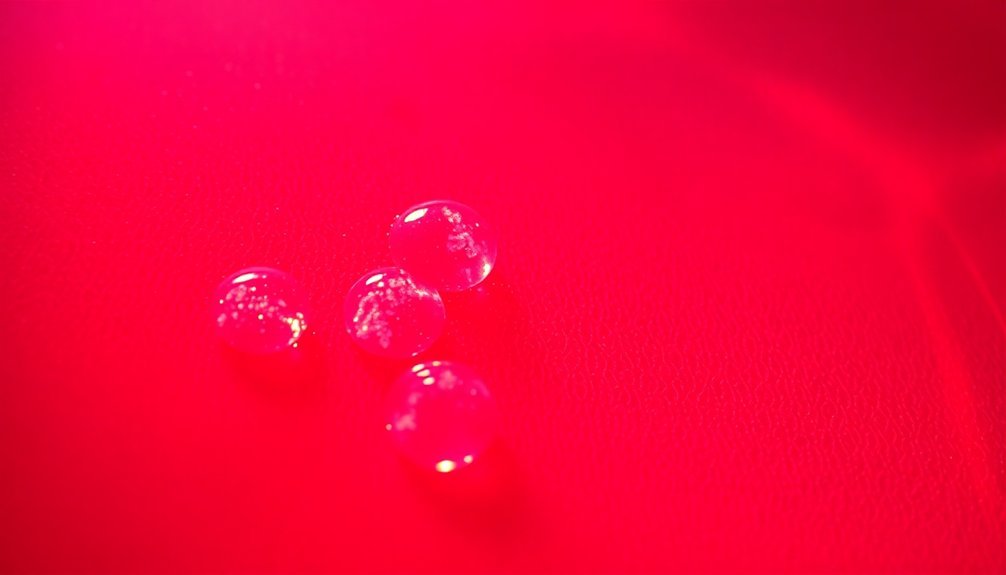
Losing fat safely requires a thorough approach that combines proper nutrition, exercise, and lifestyle modifications. You'll achieve the best results by focusing on proven strategies that work together to support your body's natural fat-burning processes.
- Create a sustainable calorie deficit while maintaining a high-protein diet rich in whole grains and healthy fats.
- Combine moderate-intensity cardio (150-300 minutes weekly) with regular strength training sessions.
- Get at least 7 hours of quality sleep and manage your stress levels to regulate hormones.
- Stay well-hydrated and practice mindful eating to maintain better control over your portions.
- Consider incorporating probiotics to support gut health and appetite regulation.
You can enhance these fundamental approaches with non-invasive treatments like red light therapy or ultrasonic cavitation, but they shouldn't be your primary strategy. Instead, prioritize consistent exercise and proper nutrition.
Remember that good blood flow is essential for fat loss, so regular movement throughout the day helps maximize your results. Whether you choose intermittent fasting or traditional meal timing, the key is maintaining a sustainable approach that you can follow long-term while preserving muscle mass and supporting overall health.
Combining Exercise With Light Therapy
Research powerhouse studies have shown that combining red light therapy with exercise creates a remarkable synergistic effect, boosting fat loss by up to 444% in treated areas compared to exercise alone. You'll experience enhanced performance, improved muscle mass, and better recovery when you pair these treatments together.
The combined approach works through multiple pathways. Red light therapy prepares your muscles by increasing blood flow and creating vasodilation effects before you work out. During exercise, it enhances your peak performance by 15%, while supporting better endurance and muscle function. Post-workout, it speeds up recovery and reduces muscle soreness through improved inflammatory response.
| Benefit | Exercise Alone | With Red Light |
|---|---|---|
| Fat Loss | Baseline | 444% increase |
| Performance | 10% boost | 15% boost |
| Recovery | Standard | Enhanced |
For ideal results, you'll want to maintain consistency with your treatments. Aim for 12-minute sessions three times weekly, and combine them with a diet of minimally processed foods. The synergy between red light therapy, exercise, and proper nutrition creates a thorough approach that delivers sustainable weight loss results.
Treatment Areas and Effectiveness
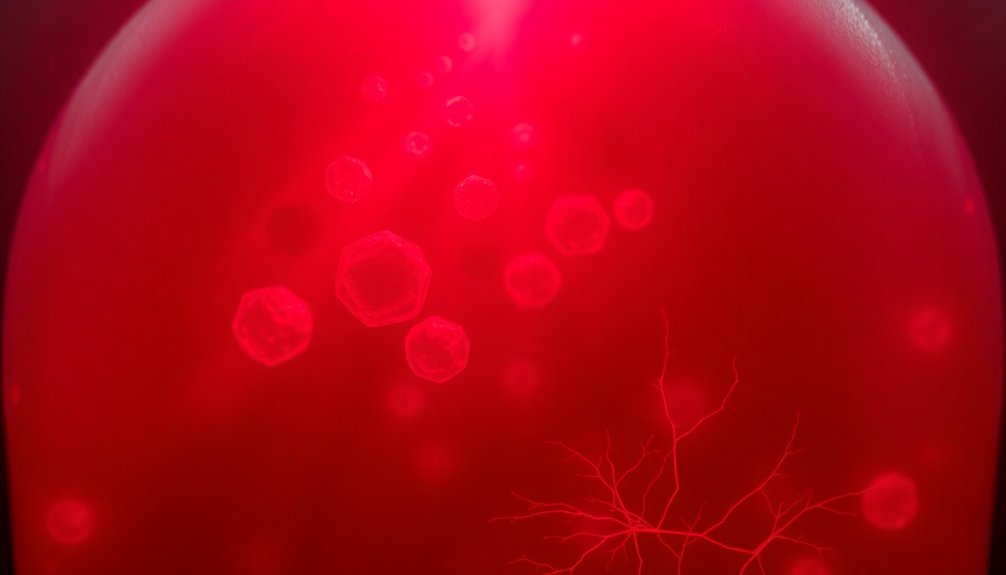
Red light therapy's fat-reduction effects work most powerfully in specific areas of the body where stubborn fat tends to accumulate. The treatment targets dysfunctional fat cells, known as hypertrophic adipocytes, while leaving healthy fat tissue unaffected.
You'll typically notice visible changes after 8 to 12 weeks of consistent treatment, particularly when you combine it with regular exercise and a balanced diet.
The effectiveness of your treatment depends on several key factors:
- Frequency of sessions – you'll need multiple treatments per week for ideal results
- Duration of treatment program – commit to at least 2-3 months for noticeable changes
- Target area selection – focus on specific regions where fat accumulates
- Consistency in treatment – maintain regular sessions without long breaks
- Lifestyle factors – combine with proper nutrition and physical activity
Studies show significant fat reduction in treated areas, particularly in cases involving obesity and diabetes. The therapy works by stimulating fat cells to release triglycerides while enhancing your cellular metabolism.
Unlike invasive procedures, this treatment offers a safe, non-surgical approach to fat reduction, and you can even combine it with other non-invasive methods for enhanced results.
Red Light Vs Traditional Methods
When comparing fat reduction methods, you'll find that red light therapy offers distinct advantages over traditional approaches. Unlike surgical procedures that can be invasive and risky, red light therapy provides a gentle, non-invasive way to target fat cells through natural biological processes. You won't experience significant downtime or adverse effects commonly associated with surgical interventions.
The therapy works by stimulating your body's natural fat-breakdown mechanisms. It interacts with chromophores in your fat cells, triggering increased ATP production and enhancing mitochondrial function.
This process helps release triglycerides from adipocytes, effectively reducing fat volume while preserving the cells themselves. You'll benefit from improved cellular metabolism and increased energy expenditure, which supports your body's natural fat-burning capabilities.
You can maximize results by combining red light therapy with your existing diet and exercise routine. While it's not a miracle solution for spot reduction, it offers a scientifically-backed approach to overall fat loss.
The therapy's ability to enhance metabolic rate and stimulate mitochondrial biogenesis creates a sustainable foundation for long-term weight management, making it a valuable addition to your fitness arsenal.
Managing Weight Loss Expectations
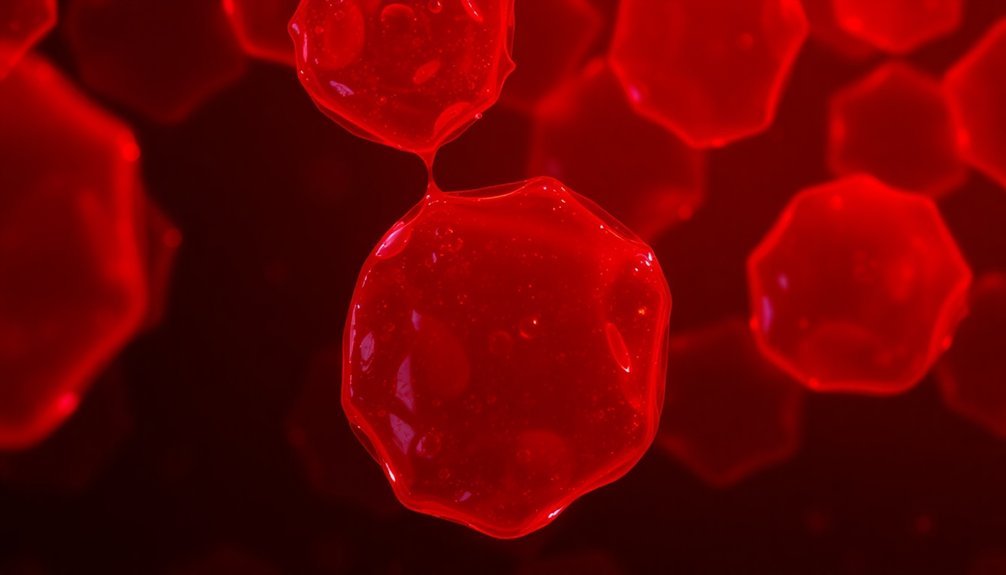
Understanding realistic weight loss expectations strengthens your journey with red light therapy and other fat reduction methods. You'll want to aim for a sustainable weight loss rate of 1-2 pounds per week, as losing weight too quickly often leads to regain and potential health issues.
Setting specific, achievable goals helps you maintain motivation while pursuing your weight loss objectives.
Consider these key aspects when managing your expectations:
- Focus on losing 5% of your current weight initially, which can deliver significant health benefits.
- Create a moderate daily caloric deficit of 500-750 calories for sustainable results.
- Combine action goals (like daily walks) with outcome goals (such as target weight).
- Accept that initial weight loss may be faster but will naturally slow down.
- Remember that consistent small changes outperform dramatic short-term efforts.
You'll achieve the best results by taking a holistic approach that includes balanced nutrition, regular physical activity, and stress management. While red light therapy can support your fat reduction goals, it works best as part of a thorough lifestyle change.
Focus on long-term success rather than quick fixes, and don't hesitate to seek professional guidance for personalized strategies.
Frequently Asked Questions
How Long Does It Take to See Noticeable Results From Red Light Therapy?
You'll notice initial results within 1-2 weeks, but significant changes take 4-12 weeks of consistent therapy. For maximum benefits, you'll need multiple weekly sessions combined with healthy lifestyle habits.
Can Red Light Therapy Help With Stubborn Cellulite Reduction?
Yes, you'll find red light therapy effective for stubborn cellulite reduction. It stimulates collagen production, enhances blood flow, and breaks down fat cells. Studies show significant improvements with 2-3 sessions weekly over 4-6 weeks.
Does Skin Color or Thickness Affect Red Light Therapy Results?
Your skin color may affect red light therapy results, with darker skin being more sensitive to treatment. However, skin thickness doesn't substantially impact outcomes, as the light can effectively penetrate to reach deeper tissues.
Is Red Light Therapy Safe During Pregnancy or While Breastfeeding?
While red light therapy shows promise, you'll want to consult your healthcare provider first. Though studies suggest it's safe, limited research during pregnancy and breastfeeding means it's best to exercise caution and avoid abdominal treatments.
How Many Sessions per Week Are Recommended for Optimal Fat Loss?
You'll get the best fat loss results with three sessions per week. While twice weekly can still be effective, three sessions provide the ideal outcomes for reducing waist circumference and enhancing fat breakdown.
In Summary
You've learned how red light wavelengths target fat cells through cellular stimulation and increased ATP production. When you combine this therapy with regular exercise, you'll see enhanced results in fat breakdown and removal through your lymphatic system. While it's not a miracle solution, you can expect gradual improvements in targeted areas when you maintain consistent treatments and realistic expectations for your weight loss journey.
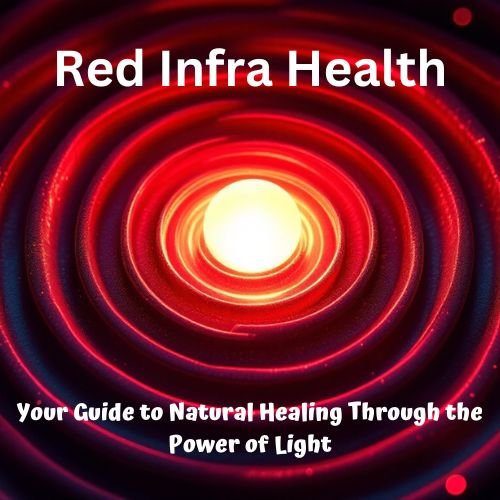
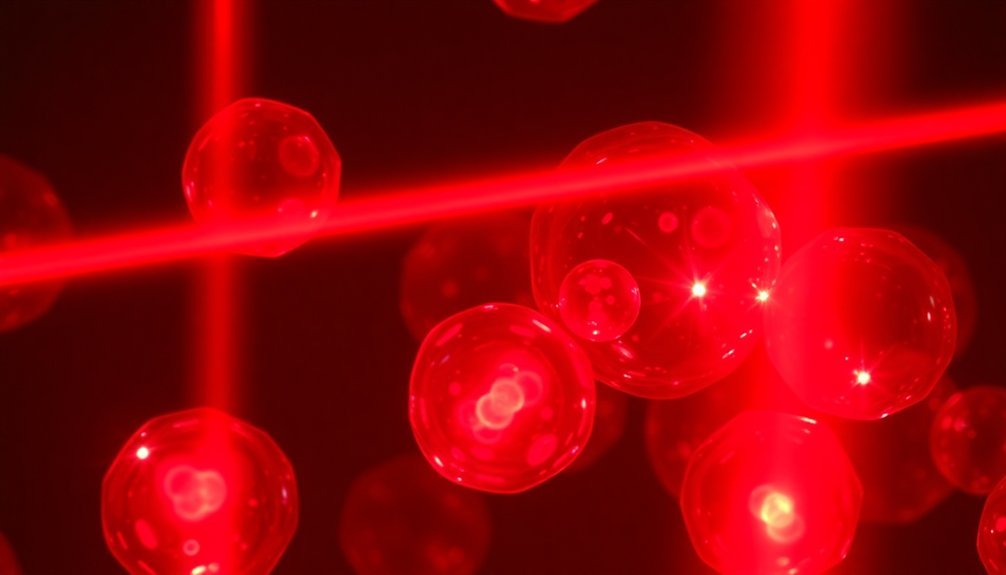



Leave a Reply